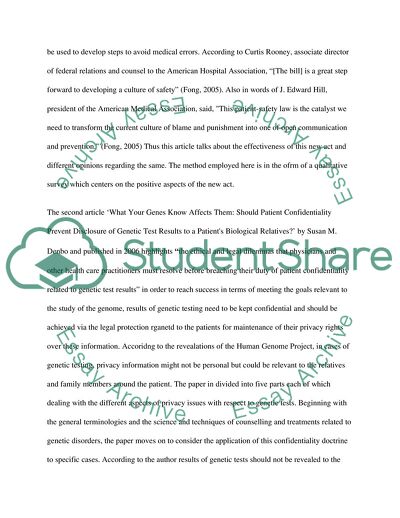
- Home
- Free Samples
- Premium Essays
- Editing Services
- Extra Tools
- Essay Writing Help
- About Us
- Studentshare
- Subjects
- Miscellaneous
- HEALTHCARE IN VIRTUAL PRIVATE NETWORK
HEALTHCARE IN VIRTUAL PRIVATE NETWORK - Essay Example

- Subject: Miscellaneous
- Type: Essay
- Level: Undergraduate
- Pages: 4 (1000 words)
- Downloads: 0
- Author: gvandervort
Extract of sample "HEALTHCARE IN VIRTUAL PRIVATE NETWORK"
ed especially those related to the patients’ information, which are computerized, telemedicine, faxes, pagers, voicemail, answering machines, videotapes. The healthcare personnel and administration need to be trained in this regard such that they may overcome the risk to confidentiality enforced by the common human behavior. Risks in confidentiality of patient data might arise due to more than one issue. Careless gossiping and chatting, careless handling of data, unnecessary interference in another area of database which does not concern one’s own department or unnecessary download and access of patient data.
The communication systems should also be handled with honesty and careful monitoring is essential in order to prevent leakages of patient data in the healthcare environment. (Palkon, 2001) The following three papers would help in analyzing this issue from different angles. The first article, ‘Protection for reporting’ written by Tong Fong and published in 2005, talks about the signing of the bill by President Bush which ensures the confidentiality of patient safety information reported to the national database organizations as guaranteed by HHS.
This has helped in changing the scenario of blaming and punishing into an environment of clear ‘communication and prevention’. Thus the health providers would be getting liability protection while reporting medical errors. The information relavant to patient safety data was supposed to be used to develop steps to avoid medical errors. According to Curtis Rooney, associate director of federal relations and counsel to the American Hospital Association, “[The bill] is a great step forward to developing a culture of safety” (Fong, 2005).
Also in words of J. Edward Hill, president of the American Medical Association, said, "This patient-safety law is the catalyst we need to transform the current culture of blame and punishment into one of open communication and prevention." (Fong, 2005) Thus this article
...Download file to see next pages Read More
- TERMS & CONDITIONS
- PRIVACY POLICY
- COOKIES POLICY